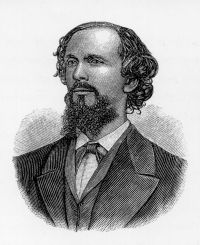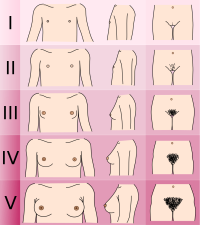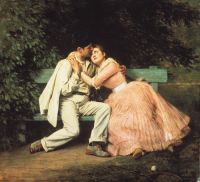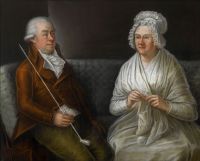One of our staff members is contributing considerably to a News Archiving service at Mu. Any well educated (Masters, PhD or above) users who wish to make comments on news sites, please contact Jim Burton directly rather than using this list, and we can work on maximising view count.
Chronophilia: Difference between revisions
The Admins (talk | contribs) |
|||
| (16 intermediate revisions by 3 users not shown) | |||
| Line 1: | Line 1: | ||
__NOTOC__[[File:The Ill-Matched Couple Lucas Cranach the Elder.jpg|thumb|200px|"Ill-Matched Couple: Young Man and Old Woman" by [[Wikipedia:Lucas Cranach the Elder|Lucas Cranach the Elder]], c. 1520]] | __NOTOC__[[File:The Ill-Matched Couple Lucas Cranach the Elder.jpg|thumb|200px|"Ill-Matched Couple: Young Man and Old Woman" by [[Wikipedia:Lucas Cranach the Elder|Lucas Cranach the Elder]], c. 1520]] | ||
'''"Chronophilia"''' is defined as a type of sexual interest or preference for individuals of a particular age.<ref name="Mokros_2017">Mokros, A. (Jan, 2017). [https://sci-hub.se/10.1007/s10508-016-0882-4 The Chronophilia Conundrum: Continuum or Epiphenomenon?] ''Archives of Sexual Behavior'', volume 46, issue 1, pages 43–45, pmid 27778133, doi 10.1007/s10508-016-0882-4, s2cid 254250686</ref> | '''"Chronophilia"''' is defined as a type of sexual interest or preference for individuals of a particular age.<ref name="Mokros_2017">Mokros, A. (Jan, 2017). [https://sci-hub.se/10.1007/s10508-016-0882-4 The Chronophilia Conundrum: Continuum or Epiphenomenon?] ''Archives of Sexual Behavior'', volume 46, issue 1, pages 43–45, pmid 27778133, doi 10.1007/s10508-016-0882-4, s2cid 254250686</ref> The term is often used alongside the concept of [[Research:_Pedophilia_as_a_sexual/erotic_orientation|"sexual orientation"]] and "erotic age orientation."<ref name="Seto_2017"/><ref>Seto, Michael (2012). [https://end-the-stigma.com/resources/Is_Pedophilia_a_Sexual_Orientation-Michael_C_Seto.pdf "Is Pedophilia a Sexual Orientation?"], ''Archives of Sexual Behaviour'', 41.</ref><ref name="Arenzon et al._2025">Arenzon, V., Curtis, A., de Almeida, H., and Evanoff, C. (2025). [https://doi.org/10.5964/sotrap.13135 "Overlap in Erotic Age Preferences: Support for the Chronophilia Theory in a Community Self-Report Sample of Males"], ''Sexual Offending Theory Research and Prevention'', Vol. 20.</ref> | ||
"Chronophilias" related to ''[[minor]]s'' are [[nepiophilia]] (attraction toward infants), [[pedophilia]] (prepubescent children), [[hebephilia]] (pubescent youth) and [[ephebophilia]] (late teens). Chronophilias related to ''adults'' are mesophilia and [[gerontophilia]]. The only supposedly "typical" form of "chronophilia" is [[teleiophilia]] (attraction toward young adults).<ref name="Seto">[[Michael Seto|Seto, M.]] [http://theconversation.com/what-are-chronophilias-88074 What are chronophilias?] [[Wikipedia:The Conversation (website)|The Conversation]]</ref><ref>Singal, J. (2016). [https://www.thecut.com/2016/08/liking-middle-aged-people-is-probably-a-sexual-orientation.html Being Into Middle-Aged People Is Probably a Sexual Orientation] [[Wikipedia:The Cut (website)|The Cut]]</ref> | "Chronophilias" related to ''[[minor]]s'' are [[nepiophilia]] (attraction toward infants), [[pedophilia]] (prepubescent children), [[hebephilia]] (pubescent youth) and [[ephebophilia]] (late teens). Chronophilias related to ''adults'' are mesophilia and [[wikipedia:gerontophilia|gerontophilia]]. The only supposedly "typical" form of "chronophilia" is [[teleiophilia]] (attraction toward young adults).<ref name="Seto">[[Michael Seto|Seto, M.]] [http://theconversation.com/what-are-chronophilias-88074 What are chronophilias?] [[Wikipedia:The Conversation (website)|The Conversation]]</ref><ref>Singal, J. (2016). [https://www.thecut.com/2016/08/liking-middle-aged-people-is-probably-a-sexual-orientation.html Being Into Middle-Aged People Is Probably a Sexual Orientation] [[Wikipedia:The Cut (website)|The Cut]]</ref> | ||
" | Each "chronophilia" is associated with a stage of the [[Wikipedia:Tanner scale|Tanner scale]] of human sexual development, which ranges from stages one to five. Hebephilia, however, corresponds to both stages 2 and 3. All "chronophilias" related to adults correspond to stage 5 of the scale.<ref name="Seto_2017" /> | ||
Concomitant with the above, Chronophilic sexual labels (to the extent they are used) do not technically relate to age itself, but to preferences for human sexual maturity stages, connoting features such as body type, muscle development, and secondary sexual characteristics.<ref name="Seto_2017">[[Michael Seto|Seto, MC]]. (January 2017). [https://sci-hub.se/10.1007/s10508-016-0799-y The Puzzle of Male Chronophilias] ''[[Archives of Sexual Behavior]]'', volume 46, issue 1, pages 3–22, pmid 27549306, doi 10.1007/s10508-016-0799-y, s2cid 254256051</ref> This is one of the reasons why embracing chronophilic labels, or treating them as discrete or discontinuous natural taxa, is a controversial idea among [[Minor Attracted Person|MAPs]]. | |||
== Etymology == | == Etymology == | ||
| Line 19: | Line 19: | ||
Age-based sexual attractions have been a topic of scientific study for over 150 years, [[Wikipedia:Karl Heinrich Ulrichs|Ulrichs]] arguably being the first theorist of the field. However, after the mid 1980's there was a cultural and global [[Medicalism|medicalization]] of the topic, as well as an intimidation of scholarly inquiries regarding this subject that escaped the field of [[Wikipedia:Forensic psychology|forensics]].<ref name="Janssen_2017" /> | Age-based sexual attractions have been a topic of scientific study for over 150 years, [[Wikipedia:Karl Heinrich Ulrichs|Ulrichs]] arguably being the first theorist of the field. However, after the mid 1980's there was a cultural and global [[Medicalism|medicalization]] of the topic, as well as an intimidation of scholarly inquiries regarding this subject that escaped the field of [[Wikipedia:Forensic psychology|forensics]].<ref name="Janssen_2017" /> | ||
Much of the scientific knowledge of non-teleiophilic "chronophilias" in fact derives from forensic and [[Wikipedia:Corrections|correctional]] samples. | Much of the scientific knowledge of non-teleiophilic "chronophilias" in fact derives from forensic and [[Wikipedia:Corrections|correctional]] samples, though some research has drawn participants from the general population.<ref name="Arenzon et al._2025"/> Non-teleiophilic, criminal offenders are most certainly not representative of the whole population of non-teleiophilic people.<ref name="Mokros_2017" /> | ||
== Classification == | == Classification == | ||
[[File:Tanner scale-female.svg.png|thumb|200px|The [[Wikipedia:Tanner scale|Tanner scale]], showing stages one to five for human females.]]Each "chonophilia" is related to a stage of the Tanner scale, which is a model that describes the evolution of visible primary and secondary sexual characteristics of human beings from childhood to adulthood. Though physical features are important for eliciting "chronophilic" sexual arousal, psychological features may also play a role in it. Pedophile males, for example, have reported "[[Childhood Innocence|innocence]]" and "playfulness" as part of what they find attractive in children.<ref name="Seto_2017" /> | [[File:Tanner scale-female.svg.png|thumb|200px|The [[Wikipedia:Tanner scale|Tanner scale]], showing stages one to five for human females.]]Each "chonophilia" is related to a stage of the Tanner scale, which is a model that describes the evolution of visible primary and secondary sexual characteristics of human beings from childhood to adulthood. Though physical features are important for eliciting "chronophilic" sexual arousal, psychological features may also play a role in it. Pedophile males, for example, have reported "[[Childhood Innocence|innocence]]" and "playfulness" as part of what they find attractive in children.<ref name="Seto_2017" /> | ||
There is presently [[Debate Guide: Corresponding age attraction|no evidence]] that age preferences among men vary as they themselves age, although some surveys of mature women suggest that the average age of their preferred long-term partner increases with theirs. "Chronophilias" may begin to manifest in the ages associated with [[Wikipedia:menarche|menarche]] and [[Wikipedia:puberty|puberty]], as is the case for pedophilia and possibly other chronophilias.<ref name="Seto_2017" /> | There is presently [[Debate Guide: Corresponding age attraction|no evidence]] that age preferences among men vary as they themselves age, although some surveys of mature women suggest that the average age of their preferred long-term partner increases with theirs.<ref>[https://www.businessinsider.com/dataclysm-shows-men-are-attracted-to-women-in-their-20s-2014-10?international=true&r=US&IR=T CHARTS: Guys Like Women In Their Early 20s Regardless Of How Old They Get - Business Insider]</ref> "Chronophilias" may begin to manifest in the ages associated with [[Wikipedia:menarche|menarche]] and [[Wikipedia:puberty|puberty]], as is the case for pedophilia and possibly other chronophilias.<ref name="Seto_2017" /> | ||
It is also said to be possible for human beings to have more than one "chronophilia".<ref name="Seto_2017" /><ref name="BeierDisorder" /> People who are pedophiles and hebephiles at the same time may be called [[Wikipedia:Pedohebephilia|pedohebephiles]].<ref>[[Sara Jahnke|Jahnke, Sara]] et al (2023). [https://journals.sagepub.com/doi/full/10.1177/10790632221098341 Pedohebephilia and Perceived Non-coercive Childhood Sexual Experiences: Two Non-matched Case-Control Studies]. ''Sexual Abuse'', volume 35, issue 3, pages 340 374, doi 10.1177/10790632221098341, issn 1079-0632, pmc 10041574, pmid 35549946</ref> | It is also said to be possible for human beings to have more than one "chronophilia".<ref name="Seto_2017" /><ref name="BeierDisorder" /> People who are pedophiles and hebephiles at the same time may be called [[Wikipedia:Pedohebephilia|pedohebephiles]].<ref>[[Sara Jahnke|Jahnke, Sara]] et al (2023). [https://journals.sagepub.com/doi/full/10.1177/10790632221098341 Pedohebephilia and Perceived Non-coercive Childhood Sexual Experiences: Two Non-matched Case-Control Studies]. ''Sexual Abuse'', volume 35, issue 3, pages 340 374, doi 10.1177/10790632221098341, issn 1079-0632, pmc 10041574, pmid 35549946</ref> | ||
| Line 40: | Line 40: | ||
=== Pedophilia === | === Pedophilia === | ||
[[Pedophilia]] is a "chronophilia" whose | [[Pedophilia]] is a "chronophilia" whose pattern of attraction is towards [[Wikipedia:prepubescent|prepubescent]] minors ([[child]]ren) from the ages of 3 to 10 (sometimes set as high as 11, or 12). This age range also corresponds to Tanner stage 1.<ref name="Seto_2017" /> | ||
Pedophilia is the best-researched chronophilia. It has been estimated in the [[DSM]] that the prevalence of pedophilia among the general male population could be as high as 5%. Pedophilia is more common among men than women, which is the case with most interests defined as [[paraphilia]]s (except for [[Wikipedia:Sadomasochism|masochism]] and objectophilia, among others).<ref name="Seto_2017" /> | Pedophilia is the best-researched chronophilia. It has been estimated in the [[DSM]] that the prevalence of pedophilia among the general male population could be as high as 5%. Pedophilia is more common among men than women, which is the case with most interests defined as [[paraphilia]]s (except for [[Wikipedia:Sadomasochism|masochism]] and objectophilia, among others).<ref name="Seto_2017" /> | ||
| Line 66: | Line 66: | ||
=== Mesophilia === | === Mesophilia === | ||
Mesophilia (derived from the Greek "mesos", "intermediate") is a sexual preference for middle-aged adults (40s and 50s). The term was coined by [[Michael Seto]] in 2016.<ref name="Seto_2017"> | Mesophilia (derived from the Greek "mesos", "intermediate") is a sexual preference for middle-aged adults (40s and 50s). The term was coined by [[Michael Seto]] in 2016.<ref name="Seto_2017" /> | ||
=== Gerontophilia === | === Gerontophilia === | ||
| Line 73: | Line 73: | ||
== Nonexclusive age interests == | == Nonexclusive age interests == | ||
Some individuals can, unsurprisingly, be classified as having "more than one chronophilia". And the concept of nonexclusivity can also cover nonadjacent age categories as well. Some men, for example, are equally attracted to both children and adults, just like other men are attracted to males and females.<ref name="Seto_2017" /> | Some individuals can, unsurprisingly, be classified as having "more than one chronophilia".<ref name="Arenzon et al._2025"/> And the concept of nonexclusivity can also cover nonadjacent age categories as well. Some men, for example, are equally attracted to both children and adults, just like other men are attracted to males and females.<ref name="Seto_2017" /> | ||
In a study by the [[preventionism|preventionist]] [[Wikipedia:Prevention Project Dunkelfeld|Dunkelfeld Project]], 39 out of 215 pedophilic individuals and 59% of hebephilic participants identified themselves as nonexclusive.<ref name="Seto_2017" /> A study from 2016 found that pedohebephilic women tend to be more nonexclusive than men.<ref name="Bailey_2017">[[Michael Bailey|Bailey JM]], Hsu KJ (2017). [https://sci-hub.se/10.1007/s10508-016-0885-1 Orienting Basic Research on Chronophilias] ''[[Archives of Sexual Behavior]]'', volume 46, issue 1, pages 23–26, pmid 27815643, doi 10.1007/s10508-016-0885-1, s2cid 254266621</ref> | In a study by the [[preventionism|preventionist]] [[Wikipedia:Prevention Project Dunkelfeld|Dunkelfeld Project]], 39 out of 215 pedophilic individuals and 59% of hebephilic participants identified themselves as nonexclusive.<ref name="Seto_2017" /> A study from 2016 found that pedohebephilic women tend to be more nonexclusive than men.<ref name="Bailey_2017">[[Michael Bailey|Bailey JM]], Hsu KJ (2017). [https://sci-hub.se/10.1007/s10508-016-0885-1 Orienting Basic Research on Chronophilias] ''[[Archives of Sexual Behavior]]'', volume 46, issue 1, pages 23–26, pmid 27815643, doi 10.1007/s10508-016-0885-1, s2cid 254266621</ref> In a 2025 study of 170 adult males, researchers found that attraction to one age group was more likely to co-occur with attraction to adjacent age categories (e.g., pubescent and adult) than to non-adjacent categories (e.g., prepubescent and adult), with the majority of participants reporting teleiophilia whilst also reporting some level of attraction to pubescent individuals (36%) and prepubescent children (17.7%).<ref name="Arenzon et al._2025"/> | ||
According to research from Dunkelfeld, possible chronophilic overlaps include the following:<ref name="BeierDisorder" /> | According to research from Dunkelfeld, possible chronophilic overlaps include the following:<ref name="BeierDisorder" /> | ||
| Line 108: | Line 108: | ||
Though there are often no restrictions on consensual depictions of adults in pornographic media, [[Child Pornography|erotic pornographic material involving minors]] is generally illegal.<ref name="Seto_2017" /> | Though there are often no restrictions on consensual depictions of adults in pornographic media, [[Child Pornography|erotic pornographic material involving minors]] is generally illegal.<ref name="Seto_2017" /> | ||
==Gallery== | |||
<gallery> | |||
File:Chronophilic_age_graph.png|Continuous distribution of the male chronophilic population divided by age of interest, as per Mokros, A. ''The Chronophilia Conundrum: Continuum or Epiphenomenon?'' (2017) | |||
</gallery> | |||
== See also == | == See also == | ||
Latest revision as of 03:17, 18 September 2025

"Chronophilia" is defined as a type of sexual interest or preference for individuals of a particular age.[1] The term is often used alongside the concept of "sexual orientation" and "erotic age orientation."[2][3][4]
"Chronophilias" related to minors are nepiophilia (attraction toward infants), pedophilia (prepubescent children), hebephilia (pubescent youth) and ephebophilia (late teens). Chronophilias related to adults are mesophilia and gerontophilia. The only supposedly "typical" form of "chronophilia" is teleiophilia (attraction toward young adults).[5][6]
Each "chronophilia" is associated with a stage of the Tanner scale of human sexual development, which ranges from stages one to five. Hebephilia, however, corresponds to both stages 2 and 3. All "chronophilias" related to adults correspond to stage 5 of the scale.[2]
Concomitant with the above, Chronophilic sexual labels (to the extent they are used) do not technically relate to age itself, but to preferences for human sexual maturity stages, connoting features such as body type, muscle development, and secondary sexual characteristics.[2] This is one of the reasons why embracing chronophilic labels, or treating them as discrete or discontinuous natural taxa, is a controversial idea among MAPs.
Etymology
The term chronophilia (chrono (time) + philia (love)) was coined by psychologist and sexologist John Money to describe a form of "paraphilia" in which an individual experiences sexual attraction limited to individuals of particular age ranges.[7][8]
An arguable historical precursor was Krafft-Ebing's concept of "age fetishism".[9]
Background

Most inclinations described as "chronophilias" are scarcely researched, especially mesophilia and gerontophilia. The existing body of research on the topic is also mainly focused on men. Chronophilias related to sexual attractions to minors (such as pedophilia and hebephilia), however, have a significantly larger body of modern scientific research compared to the others.[5]
Age-based sexual attractions have been a topic of scientific study for over 150 years, Ulrichs arguably being the first theorist of the field. However, after the mid 1980's there was a cultural and global medicalization of the topic, as well as an intimidation of scholarly inquiries regarding this subject that escaped the field of forensics.[10]
Much of the scientific knowledge of non-teleiophilic "chronophilias" in fact derives from forensic and correctional samples, though some research has drawn participants from the general population.[4] Non-teleiophilic, criminal offenders are most certainly not representative of the whole population of non-teleiophilic people.[1]
Classification

Each "chonophilia" is related to a stage of the Tanner scale, which is a model that describes the evolution of visible primary and secondary sexual characteristics of human beings from childhood to adulthood. Though physical features are important for eliciting "chronophilic" sexual arousal, psychological features may also play a role in it. Pedophile males, for example, have reported "innocence" and "playfulness" as part of what they find attractive in children.[2]
There is presently no evidence that age preferences among men vary as they themselves age, although some surveys of mature women suggest that the average age of their preferred long-term partner increases with theirs.[11] "Chronophilias" may begin to manifest in the ages associated with menarche and puberty, as is the case for pedophilia and possibly other chronophilias.[2]
It is also said to be possible for human beings to have more than one "chronophilia".[2][12] People who are pedophiles and hebephiles at the same time may be called pedohebephiles.[13]
Chronophilias related to minors

The term minor-attraction has been used as an umbrella term to classify chronophilias related to minors. Under this terminology, a person who is attracted to minors would be called a minor-attracted person (MAP).[14][15] The usage of this term in scientific articles started growing after 2017.[16] It is controversial among academics whether ephebophiles should be considered minor-attracted.[15][14]
Similarly to other sexual groups, people who are attracted to minors often become aware of their sexual preference during adolescence.[17]
Nepiophilia
Nepiophilia (sometimes called infantophilia) is defined as a form of sexual preference for infants up to the age of 2 or 3. This age range corresponds to the Tanner stage 1.[2]
Very little is known about nepiophilia. It, along with gerontophilia, is expected to be one of the rarest "chronophilias" that exist.[2]
Pedophilia
Pedophilia is a "chronophilia" whose pattern of attraction is towards prepubescent minors (children) from the ages of 3 to 10 (sometimes set as high as 11, or 12). This age range also corresponds to Tanner stage 1.[2]
Pedophilia is the best-researched chronophilia. It has been estimated in the DSM that the prevalence of pedophilia among the general male population could be as high as 5%. Pedophilia is more common among men than women, which is the case with most interests defined as paraphilias (except for masochism and objectophilia, among others).[2]
According to the fifth edition of the DSM, pedophilia is a paraphilia in which a person has intense sexual "urges" towards children, and experiences recurrent sexual "urges" towards and fantasies about children. Pedophilic disorder is further defined as a psychological disorder in which a person meets the criteria for pedophilia above, and also either acts upon those urges, or else experiences distress or interpersonal difficulty as a consequence.[18][19]
Hebephilia

Hebephilia is defined as a form of sexual attraction toward pubescent persons, from ages 11 to 14. This age range corresponds to Tanner stages 2 and 3.[2]
The term hebephilia was introduced by Bernard Glueck in 1955.[20] It has also been attributed to psychiatrist Paul K. Benedict.[10]
Despite being socially sanctioned in many modern Western societies, hebephilia is not an uncommon form of age-based sexual preference.[2] Hebephilia has not been included as a diagnostic category in the DSM 5.[12]
Ephebophilia
"Ephebophilia" is defined as a pattern of sexual attraction toward post-pubescent youths,[21] from the age of 15 to 17,[2] and in some instances 19. This age range is sometimes said to correspond to Tanner stage 4,[2] but this appears to be doubtful.[22]
Ephebophilia is generally considered a so-called "normophilia".[23]
Chronophilias related to adults
Teleiophilia

Teleiophilia (from Greek téleios, "full grown") is defined as a sexual preference for younger adults (20s and 30s).[24] The term was coined by Blanchard in 2000 and has seen less public adoption than some newer terms.[25]
Most human beings are said to be "teleiophilic". This "chronophilia", like all chronophilias related to adults, is associated to Tanner stage 5.[2]
Mesophilia
Mesophilia (derived from the Greek "mesos", "intermediate") is a sexual preference for middle-aged adults (40s and 50s). The term was coined by Michael Seto in 2016.[2]
Gerontophilia

Gerontophilia is sometimes defined as a sexual preference for the elderly (60s and older).[26]
Nonexclusive age interests
Some individuals can, unsurprisingly, be classified as having "more than one chronophilia".[4] And the concept of nonexclusivity can also cover nonadjacent age categories as well. Some men, for example, are equally attracted to both children and adults, just like other men are attracted to males and females.[2]
In a study by the preventionist Dunkelfeld Project, 39 out of 215 pedophilic individuals and 59% of hebephilic participants identified themselves as nonexclusive.[2] A study from 2016 found that pedohebephilic women tend to be more nonexclusive than men.[27] In a 2025 study of 170 adult males, researchers found that attraction to one age group was more likely to co-occur with attraction to adjacent age categories (e.g., pubescent and adult) than to non-adjacent categories (e.g., prepubescent and adult), with the majority of participants reporting teleiophilia whilst also reporting some level of attraction to pubescent individuals (36%) and prepubescent children (17.7%).[4]
According to research from Dunkelfeld, possible chronophilic overlaps include the following:[12]
- pedo-hebephilia: pedophilia + hebephilia;
- pedo-teleiophilia: pedophilia + teleiophilia;
- hebe-teleiophilia: hebephilia + teleiophilia;
- pedo-hebe-teleiophilia: pedophilia + hebephilia + teleiophilia;
As can be seen, the possibilities abound.
Among women
It is widely believed among academics that fewer women than men have non-teleiophilic preferences.[28][2] The overwhelming preponderance of men among people sexually attracted to minors is consistent with a general tendency of men being "paraphiles".[27]
In a survey conducted on 1,300 participants who had some form of attraction toward minors, only 5% of the respondents identified as female.[27] It has also been reported that women who had some sort of minor-attraction were more likely to have adult-oriented sexual behaviors, which is consistent with the broader sexuality literature that women are more sexually fluid than men.[14]
Minor-attracted women have reported feeling further isolated and excluded than men due to their gender. In an interview for a scientific study on women who are attracted to minors, some participants reported feeling as "a minority within a minority".[14]
In popular culture
The prevalence of mesophilia in society is hinted at by the relative popularity of the slang MILF (which stands for "Mom I would Like to Fuck"), as well as the derived acronym DILF. Results from an online survey about paraphilic sexual interests suggest that 34% of women and 48% of men have reported sexual fantasies about older partners.[2]
The term pedophile is understood differently in academic and popular languages. While academics use this word to refer to people who are sexually attracted to prepubescent children, colloquially, the term often refers to anyone who carries out a sexual act with an adolescent or child. In popular criminology and crime fiction, the word pedophile is used as a generic term to describe a broad array of sexual relationships involving minors.[29]
Cinematic depictions of pedophiles, in the popular definition, include Hans Becker from M (1931 movie) and the protagonist of The Mark (1961), both of whom are portrayed as criminals.[29]
Society and stigma

Teleiophilia is identified as the "most common chronophilia" among human beings.[2] Ephebophilia is generally considered a "normophilia".[23] Chronophilias related to minors, on the other hand, are associated with higher social stigma. Research has shown that though some minor-attracted persons may receive positive social support after disclosing their attractions, others may encounter negative reactions such as threats, loss of friendships and increased levels of stress, even if they had committed no criminal offenses. In two joint studies about the topic, 38% and 49% of participants stated that minor-attracted persons who had not committed a crime should be nonetheless incarcerated, and 14 and 27% believed they would be better off dead.[17]
Individuals who are attracted to minors might also suffer from internalized stigma against their own sexual impulses.[30]
Though there are often no restrictions on consensual depictions of adults in pornographic media, erotic pornographic material involving minors is generally illegal.[2]
Gallery
-
Continuous distribution of the male chronophilic population divided by age of interest, as per Mokros, A. The Chronophilia Conundrum: Continuum or Epiphenomenon? (2017)
See also
- Age of attraction - A concept more often used by MAPs as opposed to those attempting to classify them.
- Paraphilia
- Pederasty
- Research: The Dangers of Stigma
- Minor Attracted Person
Wikipedia
References
- ↑ 1.0 1.1 Mokros, A. (Jan, 2017). The Chronophilia Conundrum: Continuum or Epiphenomenon? Archives of Sexual Behavior, volume 46, issue 1, pages 43–45, pmid 27778133, doi 10.1007/s10508-016-0882-4, s2cid 254250686
- ↑ 2.00 2.01 2.02 2.03 2.04 2.05 2.06 2.07 2.08 2.09 2.10 2.11 2.12 2.13 2.14 2.15 2.16 2.17 2.18 2.19 2.20 2.21 Seto, MC. (January 2017). The Puzzle of Male Chronophilias Archives of Sexual Behavior, volume 46, issue 1, pages 3–22, pmid 27549306, doi 10.1007/s10508-016-0799-y, s2cid 254256051
- ↑ Seto, Michael (2012). "Is Pedophilia a Sexual Orientation?", Archives of Sexual Behaviour, 41.
- ↑ 4.0 4.1 4.2 4.3 Arenzon, V., Curtis, A., de Almeida, H., and Evanoff, C. (2025). "Overlap in Erotic Age Preferences: Support for the Chronophilia Theory in a Community Self-Report Sample of Males", Sexual Offending Theory Research and Prevention, Vol. 20.
- ↑ 5.0 5.1 Seto, M. What are chronophilias? The Conversation
- ↑ Singal, J. (2016). Being Into Middle-Aged People Is Probably a Sexual Orientation The Cut
- ↑ Money, J. (1986). Lovemaps: clinical concepts of sexual/erotic health and pathology, paraphilia, and gender transposition of childhood, adolescence, and maturity. isbn 978-0-8290-1589-8, pages 70, 260
- ↑ Money, J. (1990). Gay, Straight, and In-Between: The Sexology of Erotic Orientation. isbn 978-0-19-505407-1, pages 137, 183
- ↑ Janssen, DF. (2015). 'Chronophilia': Entries of Erotic Age Preference into Descriptive Psychopathology. Medical History, volume 59, issue 4, pages 575–598, pmid 26352305, pmc 4595948, doi 10.1017/mdh.2015.47
- ↑ 10.0 10.1 10.2 Janssen DF (2017). "Chronophilia": Appreciating 150 Years of Puzzle-Solving. Archives of Sexual Behavior, vol 46, issue 1, pages 35–38, pmid 27796605, doi 10.1007/s10508-016-0883-3, s2cid 254264932
- ↑ CHARTS: Guys Like Women In Their Early 20s Regardless Of How Old They Get - Business Insider
- ↑ 12.0 12.1 12.2 Beier, K. M. et al (2015). Hebephilia as a sexual disorder. Fortschritte der Neurologie-Psychiatrie, vol 83, issue 2, pages 1–9, doi 10.1055/s-0034-1398960, issn 1439-3522, pmid 25723776
- ↑ Jahnke, Sara et al (2023). Pedohebephilia and Perceived Non-coercive Childhood Sexual Experiences: Two Non-matched Case-Control Studies. Sexual Abuse, volume 35, issue 3, pages 340 374, doi 10.1177/10790632221098341, issn 1079-0632, pmc 10041574, pmid 35549946
- ↑ 14.0 14.1 14.2 14.3 Lievesley R, Lapworth R. (February 2022). "We Do Exist": The Experiences of Women Living with a Sexual Interest in Minors. Archives of Sexual Behavior, volume 51, issue 2, pages 879–896, doi 10.1007/s10508-021-02160-z, pmc 8888496, pmid 34791582
- ↑ 15.0 15.1 Lievesley et al (2022). Primary Health Professionals' Beliefs, Experiences, and Willingness to Treat Minor-Attracted Persons. Archives of Sexual Behavior, volume 51, issue 2, pages 923–943, doi 10.1007/s10508-021-02271-7, issn 1573-2800, pmc 8793822, pmid 35084616
- ↑ Jahnke, Sara et al (2022). Pedophile, Child Lover, or Minor-Attracted Person? Attitudes Toward Labels Among People Who are Sexually Attracted to Children. Archives of Sexual Behavior, volume 51, issue 8, pages 4125–4139, doi 10.1007/s10508-022-02331-6, issn 0004-0002, pmc 9663395, pmid 36175817
- ↑ 17.0 17.1 Walker, Allyson and Panfil, Vanessa R. (2017). Minor Attraction: A Queer Criminological Issue. Critical Criminology volume 25, issue 1, pages 37–53, doi 10.1007/s10612-016-9342-7, s2cid 254419401, issn 1572-9877
- ↑ American Psychiatric Association (2013). Highlights of Changes from DSM-IV-TR to DSM-5. Archived. Paraphilic disorders (page 18)
- ↑ American Psychiatric Association (2000). Diagnostic and Statistical Manual of Mental Disorders DSM-IV TR (Text Revision). Vol 1, isbn 978-0-89042-024-9, doi 10.1176/appi.books.9780890423349, page 943. Archived.
- ↑ Glueck Jr BC, 1955. Research project for the study and treatment of persons convicted of crimes involving sexual aberrations. New York State Department of Mental Hygiene
- ↑ Blanchard, R., Lykins, A. D., Wherrett, D., Kuban, M. E., Cantor, J. M., Blak, T., Dickey, R., & Klassen, P. E. (2008). Pedophilia, hebephilia, and the DSM–V. Archives of Sexual Behavior. doi 10.1007/s10508-008-9399-9.
- ↑ "The decreasing age of puberty". Texas A&M Health Science Center. 10 January 2018.
- ↑ 23.0 23.1 Hames, Raymond and Blanchard, Ray (2012). Anthropological Data Regarding the Adaptiveness of Hebephilia. Archives of Sexual Behavior, volume 41, issue 4, pages 745–747, doi 10.1007/s10508-012-9972-0, pmid 22644593, s2cid 254261711, issn 1573-2800
- ↑ Blanchard R et al (2000). Fraternal birth order and sexual orientation in pedophiles. Archives of Sexual Behavior, volume 29, issue 5, pages 463–478, pmid 10983250, doi 10.1023/A:1001943719964, s2cid 19755751
- ↑ Blanchard R, Barbaree HE (2005). The strength of sexual arousal as a function of the age of the sex offender: comparisons among pedophiles, hebephiles, and teleiophiles. Sexual Abuse, volume 17, issue 4, pages 441–456, pmid 16341604, doi 10.1177/107906320501700407, s2cid 220355347
- ↑ Kaul A, Duffy S (1991). Gerontophilia - a case report. Medicine, Science, and the Law, volume 31, issue 2, pages 110–114, pmid 2062191, doi 10.1177/002580249103100204, s2cid 6455643
- ↑ 27.0 27.1 27.2 Bailey JM, Hsu KJ (2017). Orienting Basic Research on Chronophilias Archives of Sexual Behavior, volume 46, issue 1, pages 23–26, pmid 27815643, doi 10.1007/s10508-016-0885-1, s2cid 254266621
- ↑ Vásquez-Amézquita M, et al (2023). What can the eyes tell us about atypical sexual preferences as a function of sex and age? Linking eye movements with child-related chronophilias. Forensic Sciences Research, doi 10.1093/fsr/owad009
- ↑ 29.0 29.1 Kohm, Steven A. and Greenhill, Pauline (2011) Pedophile crime films as popular criminology: A problem of justice? Theoretical Criminology, volume 15, issue 2, pages 195–215, doi 10.1177/1362480610388974, s2cid 145184316, issn 1362-4806
- ↑ Lievesley, Rebecca (2020-05-01). "The Internalization of Social Stigma Among Minor-Attracted Persons: Implications for Treatment," Archives of Sexual Behavior, 49, 1291–1304.
